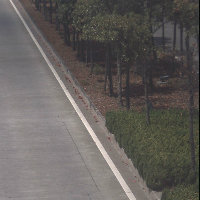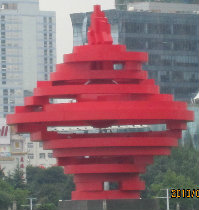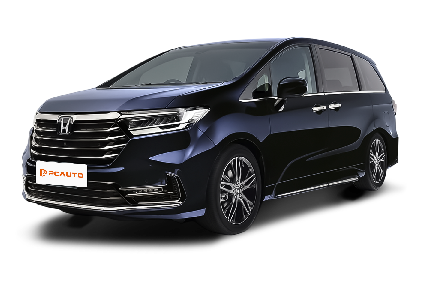Q
Does Honda Odyssey have a 4-cylinder or 6-cylinder engine?
Honda Odyssey is equipped with an in-line 4-cylinder engine. As can be seen from the parameters, it has 4 cylinders, with a naturally aspirated (NA) intake form. The displacement is 2356 mL, and the maximum horsepower of the engine is 175 PS. The in-line 4-cylinder engine has a simple structure, low cost, good stability, and is easy to repair. It also performs well in fuel economy.
The V-type engine divides the cylinders into two banks, arranged in a V shape. The cylinder angle of a V4 engine is generally either 60 degrees or 90 degrees. Compared with the in-line 4-cylinder engine, the V4 has a more compact structure, but the manufacturing process is more complex and the cost is higher. The common cylinder angles of a V6 engine are 60 degrees and 90 degrees. Compared with the in-line 4-cylinder and V4 engines, the V6 runs more smoothly and has a smoother power output, but its structure is more complex and the cost is higher.
The Honda Odyssey uses an in-line 4-cylinder engine to meet the daily usage requirements while balancing multiple factors such as cost and fuel consumption.
Special Disclaimer: This content is published by users and does not represent the views or position of PCauto.
Related Q&A
Q
Is the 2018 Honda Odyssey reliable?
In 2018, the Honda Odyssey gained popularity among many family users in the Malaysian market for its reliability and practicality. This MPV is equipped with a 2.4-liter i-VTEC engine, which provides smooth power output and good fuel economy, making it suitable for long-distance driving and city commuting. Its Earth Dreams technology also enhances the overall efficiency. In terms of the transmission, it uses a CVT continuously variable transmission, which offers smooth gear shifts and has a relatively low failure rate.
The interior space is spacious. In particular, the flexible seat layout and abundant storage designs are very suitable for family use. In terms of safety, it is equipped with the Honda SENSING system, which includes active safety features such as collision mitigation braking and lane-keeping assist, thus improving driving safety. However, some owners have reported that the third-row seats are of average comfort during long trips, and due to the large body size, drivers need some time to get used to driving it on narrow roads.
Overall, the 2018 Odyssey is a worthy MPV, especially outstanding in terms of space and reliability. If you need a vehicle suitable for family outings, it can be added to your list of options. Of course, when buying a used car, it is recommended to check the maintenance records and conduct a professional inspection to ensure the vehicle is in good condition.
Q
What is the maintenance schedule for a Honda Odyssey 2018?
The 2018 Honda Odyssey in Malaysia is recommended to have regular maintenance every 6 months or every 10,000 kilometers, whichever comes first. Basic maintenance includes changing the engine oil and oil filter, checking tire pressure, the braking system, lights, and chassis components. The air filter and air - conditioning filter need to be replaced every 20,000 kilometers. It is recommended to change the brake fluid and transmission fluid every 40,000 kilometers, and at the same time, check the drive belt and spark plugs. The coolant needs to be replaced every 60,000 kilometers.
Given the hot and humid climate in Malaysia, it is advisable to shorten the replacement cycle of the air - conditioning filter to ensure the cooling effect. Additionally, it's also important to regularly check the battery status and wiper blades, as high temperatures can accelerate the aging of these components. Following the official maintenance plan can not only maintain the vehicle's performance but also extend its service life.
It should be noted that if the vehicle is often driven in congested traffic or harsh environments, you may consider advancing the maintenance interval appropriately. The specific maintenance items may vary depending on the actual usage of the vehicle. It is recommended that car owners refer to the vehicle's manual or consult the local authorized dealer for personalized advice.
Q
How often should I change the oil in my 2018 Honda Odyssey?
Regarding the oil change frequency for the 2018 Honda Odyssey, it is recommended to follow the standard of changing the oil every 5,000 to 8,000 kilometers or every six months. The specific interval depends on your driving conditions. If you often drive short distances in the hot climate of Malaysia or encounter traffic jams, it is advisable to opt for the shorter interval of 5,000 kilometers. On the other hand, if you do a lot of highway driving, you can extend the interval to 8,000 kilometers.
Honda's original recommendation is to use fully synthetic oil with a viscosity of 0W - 20 or 5W - 30. These two types of oil perform stably in high - temperature environments and can better protect the engine. It's worth noting that regular oil changes not only keep the engine running smoothly but also improve fuel economy. It is recommended to check the oil filter every time you change the oil to ensure its filtering effect.
If you are using Honda's maintenance reminder system, you can also perform maintenance according to the system's prompts. However, it should be noted that this system calculates based on normal driving conditions. If your driving environment is relatively harsh, it is recommended to perform maintenance a bit earlier.
In addition, it is also necessary to regularly check the oil level and quality. If you notice that the oil has turned black or its viscosity has decreased, you should consider changing the oil even if the maintenance period has not arrived.
Q
When to change timing belt on 2018 Honda Odyssey?
According to general maintenance guidelines for vehicles with timing belts, it is commonly recommended to replace the timing belt of the 2018 Honda Odyssey every 60,000 to 80,000 kilometers or every 3 to 5 years, whichever occurs first. The hot and humid climate in Malaysia may accelerate the aging of rubber components, so owners are advised to have the timing belt inspected more frequently under these conditions.
The timing belt is a critical engine component. Its failure can lead to piston-to-valve interference, potentially causing catastrophic engine failure and expensive repairs. In addition to the timing belt, it is highly recommended to replace related components like the water pump, tensioner, and idler pulleys concurrently. Since these parts usually can only be accessed after removing the timing belt, replacing them all at once can save subsequent labor costs.
Car owners in Malaysia should also pay attention to using original or replacement parts of equivalent quality to ensure durability and choose a repair shop with experience in servicing Honda models for the operation. Because the transverse V6 engine of the Odyssey has a relatively compact structure, professional tools and techniques are required.
If high-pitched chirping or squealing noises emanate from the engine bay, or if cracks, fraying, or missing teeth on the belt are visible, an immediate inspection is imperative. Such signs often indicate that the belt is worn.
Q
Is the 2018 Honda Odyssey 2wd or 4wd?
The 2018 Honda Odyssey available in the Malaysian market is mainly the front - wheel drive (2WD) version, and the four - wheel drive (4WD) configuration was not introduced. This model is equipped with a 2.4 - liter i - VTEC naturally aspirated engine, paired with a CVT transmission. It focuses on comfort and family practicality. Its space layout and intelligent features are well - suited for the long - distance travel needs of Malaysian families.
In Malaysia, front - wheel drive vehicles have become the mainstream choice for most MPV models because of their simple structure, lower fuel consumption, and more cost - effective maintenance. On the other hand, four - wheel drive versions are generally more suitable for regions that require higher off - road performance or face complex road conditions. However, as an urban family car, the front - wheel drive design of the Odyssey can fully meet daily use.
For consumers considering an MPV, besides the drive type, they can also pay attention to the highlights of the Odyssey, such as the Honda Sensing safety system and the flexible seat layout. At the same time, it is recommended to compare the drive configurations and functional differences with peer models like the Toyota Alphard according to actual needs to make a more appropriate choice.
Q
Is a 2018 Honda Odyssey a good car?
The 2018 Honda Odyssey is a seven - seat MPV that has performed well in the Malaysian market. It's a great fit for families. It comes with the Honda Sensing safety system, including features like adaptive cruise control and lane - keeping assist, enhancing driving safety.
The interior space is spacious. The third - row seats can be flexibly folded, offering excellent storage capacity, making it ideal for long - distance trips. However, its chassis tuning leans towards comfort, so its handling isn't as good as that of sporty models. Also, the maintenance cost is slightly higher than that of locally assembled vehicles.
If you're looking for a reliable family car, the 2018 Odyssey is worth considering. But it's recommended to check the condition of used cars and confirm the original factory warranty status before purchasing. Additionally, there's a high demand for MPVs in the Malaysian market. Similar models include the Toyota Innova and Nissan Serena. You can compare the configurations and space performance according to your budget and needs.
Q
How often should the transmission fluid be changed in a 2018 Honda Odyssey?
According to Honda's official recommendation, the transmission fluid replacement interval for the 2018 Honda Odyssey is typically every 40,000 to 60,000 kilometers or every 2 to 3 years. The specific interval depends on driving conditions. If you often drive short distances frequently in Malaysia's hot climate, tow heavy loads, or get stuck in long - term traffic jams, it is recommended to shorten the replacement interval to 40,000 kilometers to ensure the smooth operation of the transmission and extend its service life.
Transmission fluid is a crucial medium for power transmission and lubrication. After it ages, it can cause rough shifting, increased fuel consumption, and even component wear. In particular, the Earth Dreams technology transmission used in the Honda Odyssey has relatively high requirements for the cleanliness of the oil. Owners in Malaysia should also pay attention to using the ATF DW - 1 type of oil specified by the original factory and avoid mixing different specifications of products. At the same time, regularly check the color of the oil (normally it should be a clear red; if it darkens or becomes cloudy, it needs to be replaced immediately). And adjust the maintenance plan according to the "Severe Driving Conditions" clause in the maintenance manual. For example, the hot and humid Southeast Asian environment all year round may be classified as severe working conditions.
In addition, although some new - type transmissions claim to be "maintenance - free", regularly replacing the oil is still the most cost - effective way to prevent major overhauls, which is especially important for 7 - seat MPVs that are often fully loaded.
Q
Does a 2018 Honda Odyssey have a timing chain or timing belt?
In 2018, the Honda Odyssey was equipped with a timing chain rather than a timing belt. This model features a 3.5 - liter V6 i - VTEC engine. The timing system of this engine uses a chain design, which is more durable compared to a belt. Usually, it doesn't need to be replaced regularly like a timing belt. You just need to check its condition during regular maintenance.
For Malaysian car owners, the advantage of the timing chain lies in its lower maintenance cost. Especially in the hot and humid climate, the metal material of the chain is more resistant to aging than the rubber belt, making it suitable for long - term use.
However, although the timing chain has a long service life, it is still recommended that car owners follow the original manufacturer's maintenance manual and regularly check the engine oil condition. Insufficient oil lubrication may affect the chain's lifespan. In addition, if you hear abnormal metallic noises in the engine compartment, it may indicate that the chain or the tensioner needs to be inspected. Timely repairs can prevent greater damage.
Understanding the type of the timing system and the key points of maintenance can help car owners better maintain their vehicles and ensure the long - term stable operation of the engine.
Q
What is the fuel pump recall on 2018 Odyssey?
Honda Odyssey initiated a global recall due to fuel pump malfunctions. Some vehicles in the Malaysian market might also be affected. The problem stems from the possible deformation of the impeller inside the fuel pump due to manufacturing defects, which could cause the engine to suddenly stall while driving, posing a safety hazard. Subsequently, Honda Malaysia replaced the improved fuel pump assemblies for the affected vehicles free of charge through authorized dealers.
As the core component of the fuel supply system of an EFI engine, the reliability of the fuel pump directly affects driving safety. It is recommended that owners of the 2018 Odyssey continuously follow the recall announcements on the official website of Honda Malaysia or use the VIN code query tool to confirm whether their vehicles are on the list. If they notice symptoms such as weak acceleration, unstable idling, or abnormal stalling, they should immediately contact the dealer for inspection.
It's worth noting that fuel system maintenance is particularly important in Malaysia's tropical climate. Regularly replacing the fuel filter and using gasoline that meets the standards can effectively extend the lifespan of the fuel pump. If the owner has modified the fuel system or installed external devices on their own, it may affect the effectiveness of the original - factory recall service. It is advisable to inform the service center in advance to ensure the maintenance rights.
Q
Does the 2018 Honda Odyssey have all wheel drive?
The 2018 Honda Odyssey doesn't offer an all - wheel drive (AWD) version in the Malaysian market. This model is only equipped with a front - wheel drive (FWD) system. This design mainly focuses on fuel economy and ride comfort for city driving, making it suitable for daily use by family users.
An all - wheel drive system is generally more suitable for areas that need to deal with complex road conditions or adverse weather. However, the climate and road conditions in Malaysia are relatively stable, and front - wheel drive can meet most needs. If you have a particular preference for all - wheel drive, you can consider other brands or models. But note that all - wheel drive may increase the purchase cost and fuel consumption.
The advantages of the Honda Odyssey lie in its spacious interior, flexible seat layout, and reliable power performance. These features make it one of the popular choices for family cars in Malaysia.
Latest Q&A
Q
What is the CC of Honda City 2020?
The 2020 Honda City hits the Malaysian market with two engine choices: a 1.5-liter SOHC i-VTEC naturally aspirated petrol engine and a 1.5-liter DOHC i-VTEC hybrid system. Let's break down the specs. The petrol unit displaces 1497cc, cranking out 121 horsepower and 145 Nm of torque. On the hybrid side, it pairs that same 1.5-liter engine with an electric motor, resulting in a combined 109 horsepower – this one's all about fuel sipping efficiency.
Now, CC (cubic centimeters) is the measure of engine displacement, and it directly impacts how a car performs and drinks fuel. Typically, a bigger displacement means more power, but it can also mean higher fuel bills. The City's 1.5-liter sweet spot is a big reason it's so popular in Malaysia – it strikes that perfect balance between pep and fuel economy, handling both city commutes and longer drives like a champ.
But the 2020 City isn't just about the engine bay. It also comes loaded with Honda Sensing safety tech and a modern, fresh interior design, which really ups its game in the market. For Malaysian buyers, this car ticks all the boxes: practical, easy on the wallet at the pump, and packed with the latest tech. It's a solid all-rounder.
Q
How much does a Honda 2020 cost?
Prices for the 2020 Honda models in Malaysia vary quite a bit depending on the specific model and how it's kitted out. Take the Honda City, for example – you're looking at roughly RM70,000 to RM90,000. The Civic sits a bit higher, usually ranging from around RM110,000 up to RM140,000, while the CR-V typically falls between RM140,000 and RM170,000. exact figures hinge on the trim level, engine specs, and any extra add-ons you might go for.
When buying a new car in Malaysia, it's not just the sticker price you need to factor in. There's registration fees, insurance, road tax – all that extra stuff adds up and affects the final on-the-road cost.
Over in the used car market, 2020 Honda models will fluctuate in price too, based on mileage, condition, and remaining warranty. You can generally pick one up for 20% to 40% less than a brand-new equivalent.
If you're in the market, I'd definitely recommend shopping around different dealers to compare quotes. It's also worth checking out any ongoing Honda promotions or financing deals – those can really help you save some cash.
Hondas have a solid rep in Malaysia for being reliable and fuel-efficient, especially popular models like the City and Civic. They're pretty affordable to own long-term, and getting them serviced or repaired is relatively straightforward.
Q
What is the top speed of Honda City 2020?
The 2020 Honda City maxes out at around 190 km/h, which is the top speed you can squeeze out of its 1.5-liter i-VTEC naturally aspirated engine under ideal conditions. Of course, in the real world, you might see a slight difference depending on road conditions, how much you're carrying, or the weather. This car is pretty popular in the Malaysian market, and it's not just because of its solid performance—it's also about that fuel efficiency and nimble handling that makes city driving a breeze. The CVT gearbox in the City does a good job smoothing out power delivery, so acceleration feels seamless and efficient, whether you're commuting daily or hitting the highway for a longer drive. For Malaysian buyers, beyond just top speed, overall performance and maintenance costs matter a lot, and the City delivers here too. Its low trouble rate and wide service network make life easier for owners. If you're craving a bit more zip, there's always the Honda City RS variant. It gets some tweaks to the engine tuning and sportier bits, but don't expect a huge jump in top speed—these cars are all about balancing practicality with a bit of driving fun, after all.
Q
How safe is the Honda City 2020?
The 2020 Honda City holds its own when it comes to safety, packing in 6 airbags, Vehicle Stability Assist (VSA), Anti-lock Braking System (ABS), and Electronic Brake-force Distribution (EBD). That's a pretty solid setup for the class, and it should do a good job of keeping you protected during those daily drives around Malaysia. Honda's ACE Body Structure is also on board here, which is designed to effectively disperse crash energy and boost occupant safety in the event of a collision. It's worth highlighting that the 2020 City scored a 5-star rating in ASEAN NCAP crash tests, which is a solid stamp of approval for its safety credentials. For Malaysian buyers, picking this car means you're not just getting Honda's usual reputation for reliability, but also a decent level of safety kit. If safety is a top priority for you, it's definitely worth checking out the specific safety features when you're looking to buy – things like whether it comes with Honda Sensing. That suite includes handy advanced features like Adaptive Cruise Control and Lane Keeping Assist, which can go a long way in making your drives even safer.
Q
What is the fuel economy of the Honda City 2020?
The 2020 Honda City demonstrates excellent fuel efficiency in the Malaysian market. The variant equipped with the 1.5L i-VTEC petrol engine and CVT transmission has an official combined fuel consumption of 5.4 L/100km (approximately 18.5 km/L). The hybrid e:HEV variant is designed for even higher efficiency, though its specific fuel consumption figure should be verified with official sources or latest reviews, as the widely cited 3.4 L/100km (approximately 29.4 km/L) lacks direct support in the provided search results and may not reflect real-world conditions in Malaysia. Both powertrains closely align with the demands of Malaysian consumers who prioritize fuel economy. Actual fuel consumption may vary depending on factors such as driving habits, road conditions, and vehicle load. Therefore, adhering to a regular maintenance schedule is crucial for maintaining optimal fuel efficiency.
Given Malaysia's hot and humid climate, judicious use of the air conditioning system and maintaining the recommended tire pressure can contribute significantly to improving fuel economy. As a top-selling model in the B-segment sedan market in Malaysia, the Honda City's fuel efficiency remains competitive against its peers, making it a practical choice for daily commuting and family use. The e:HEV hybrid version, in particular, presents a compelling option for environmentally conscious drivers seeking to minimize long-term running costs, pending verification of its specific fuel economy claims.
View MoreRelated News

Honda N-ONE e: Officially launched in the Japanese market, with a range of 295 kilometers
AshleySep 12, 2025

Honda Prelude returns after 24 years, the sixth-generation Prelude will be released in Japan
Kevin WongSep 4, 2025

Honda S7 and P7 sales in China fall short of expectations, significantly lagging behind Toyota and Nissan.
RobertSep 4, 2025

The 2025 Honda Prelude Is Back: Hybrid-Powered Coupe with Type R Chassis Tech
JohnAug 4, 2025

Honda Chief Engineer Goes Viral for Hairstyle, Formerly Led EV Dynamic Tuning
RobertJul 31, 2025
View More













 Cars
Cars




Pros
Cons